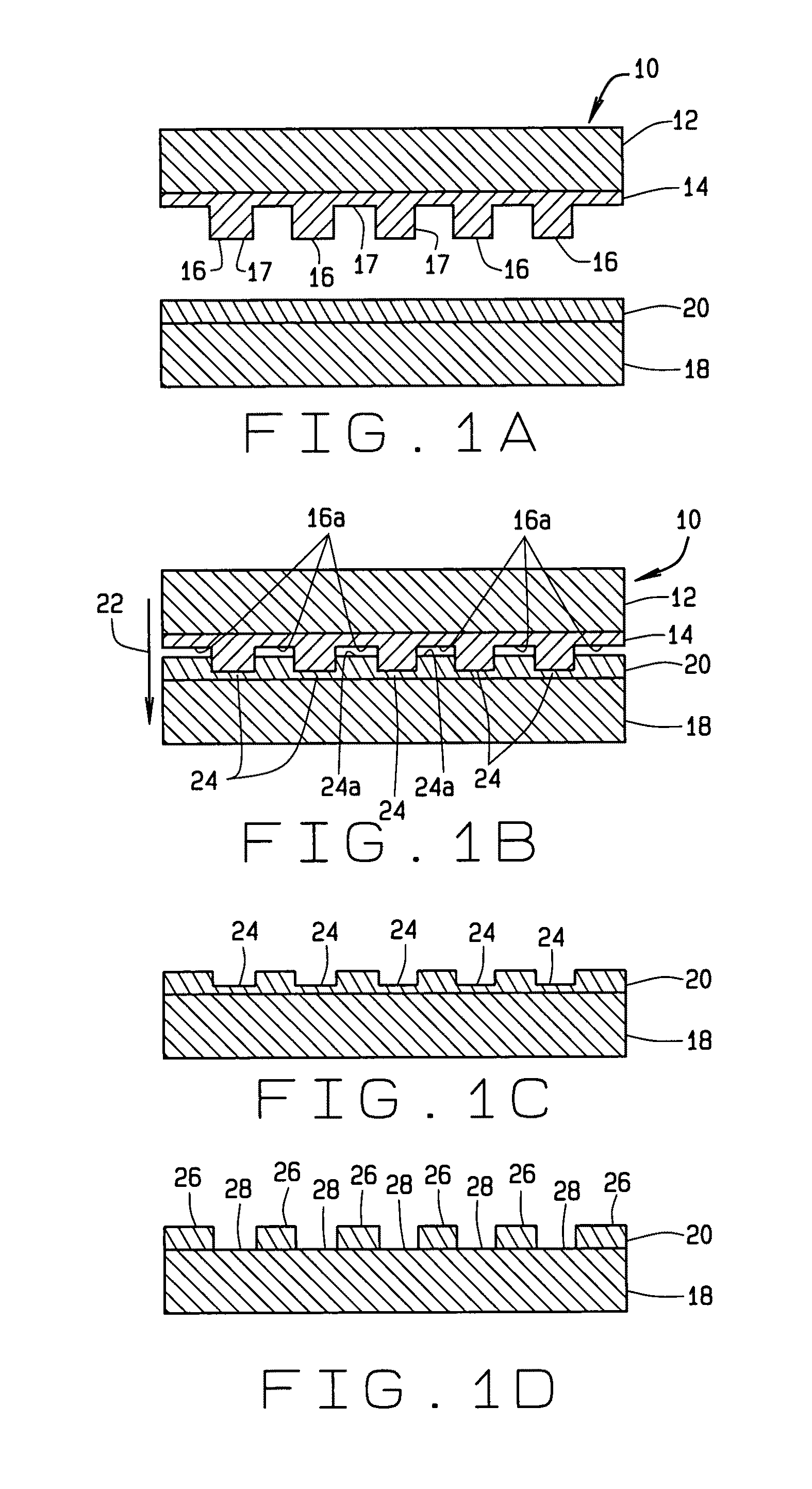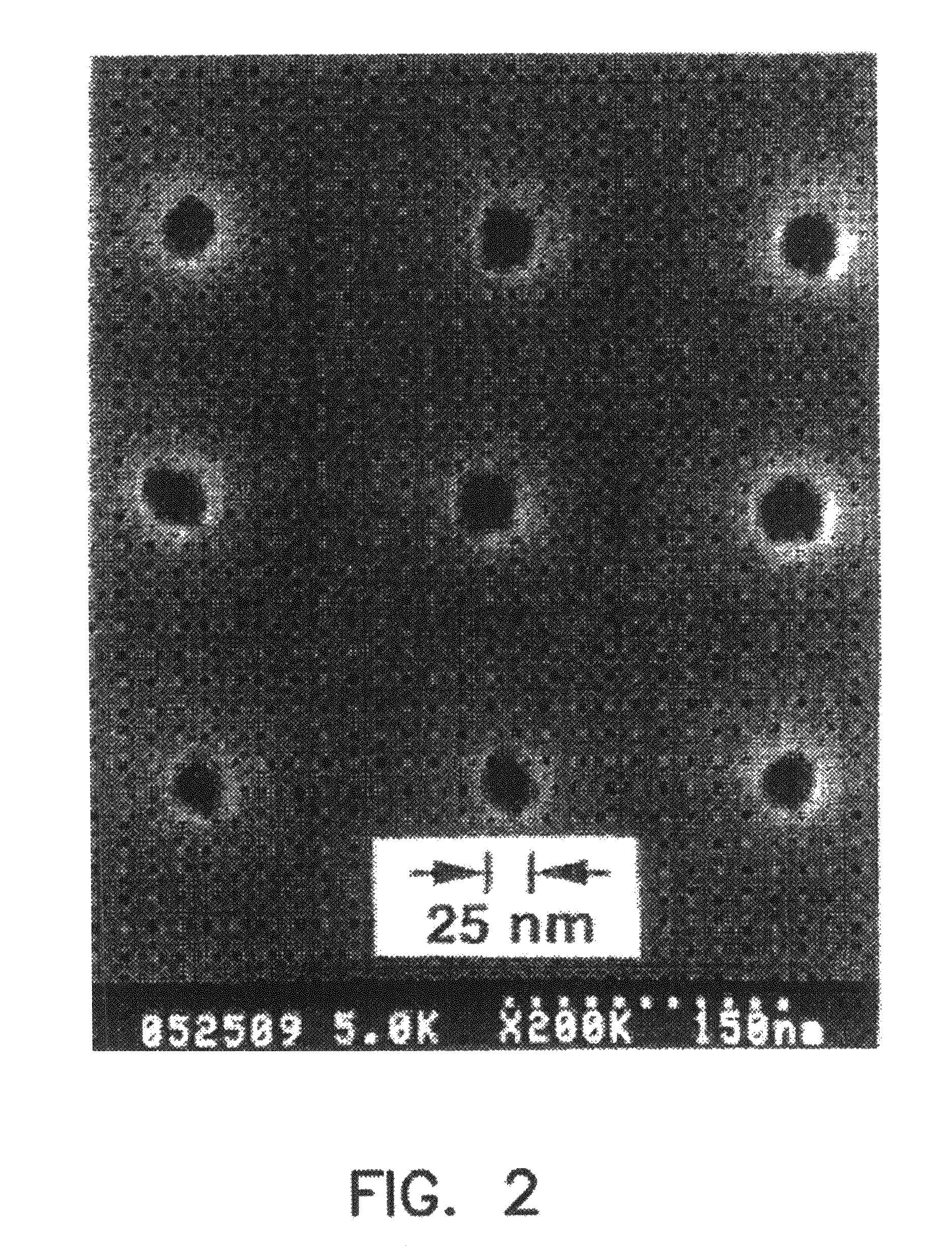Release surfaces, particularly for use in nanoimprint lithography
a technology of release surfaces and nanoimprints, applied in the field of lithography, can solve the problems of high cost of x-ray lithography tools, economic impracticality of using these technologies for mass production of sub-50 nm structures, and inability to meet the requirements of high-speed lithography, so as to improve the resolution of images, eliminate many resolution limitations, and use more often
- Summary
- Abstract
- Description
- Claims
- Application Information
AI Technical Summary
Benefits of technology
Problems solved by technology
Method used
Image
Examples
Embodiment Construction
[0031]This invention also relates to a method and apparatus for a resolution, high-throughput, lithography. Unlike current microlithography, a preferred embodiment of the present invention abandons usage of energetic light or particle beams. The present invention is based on pressing a mold into a thin film on a substrate to create a relief and, later removing the compressed area of the film to expose the underlying substrate and to form a resist pattern on the substrate that replicates the obverse of the protruding pattern of the mold.
[0032]The present invention also has demonstrated the generation of patterns, such as holes, pillars, or trenches in a thin film on a substrate, that have a minimum size of 25 nm, a depth over 100 nm, a side wall smoothness better than 3 nm, and corners with near perfect 90 degrees angles. it was found that presently the size of imprinted features is limited by the size of the mold being used; with a suitable mold, the present invention should create ...
PUM
| Property | Measurement | Unit |
|---|---|---|
| depth | aaaaa | aaaaa |
| sizes | aaaaa | aaaaa |
| size | aaaaa | aaaaa |
Abstract
Description
Claims
Application Information
 Login to View More
Login to View More - R&D
- Intellectual Property
- Life Sciences
- Materials
- Tech Scout
- Unparalleled Data Quality
- Higher Quality Content
- 60% Fewer Hallucinations
Browse by: Latest US Patents, China's latest patents, Technical Efficacy Thesaurus, Application Domain, Technology Topic, Popular Technical Reports.
© 2025 PatSnap. All rights reserved.Legal|Privacy policy|Modern Slavery Act Transparency Statement|Sitemap|About US| Contact US: help@patsnap.com



